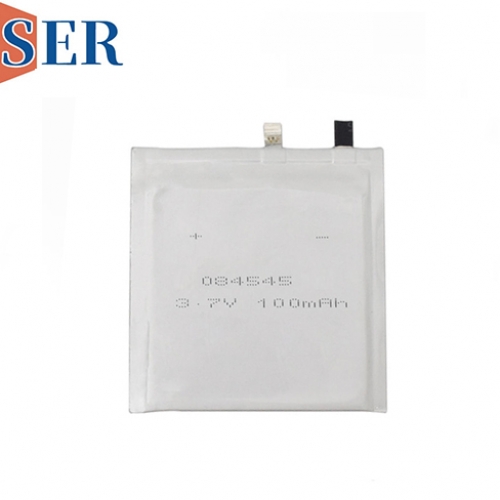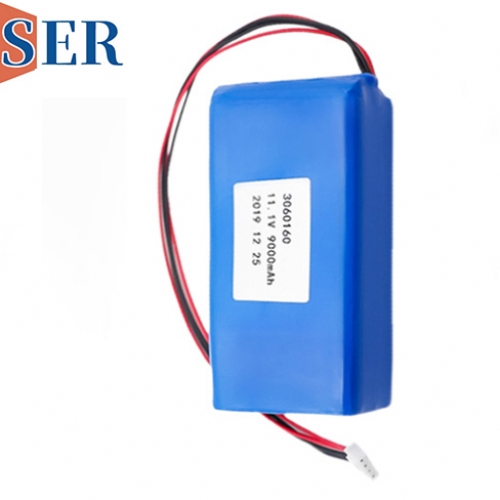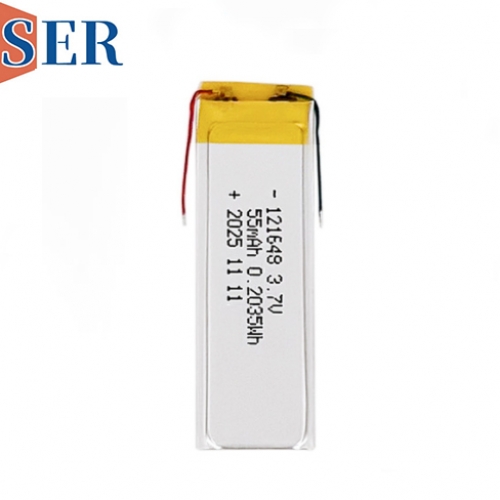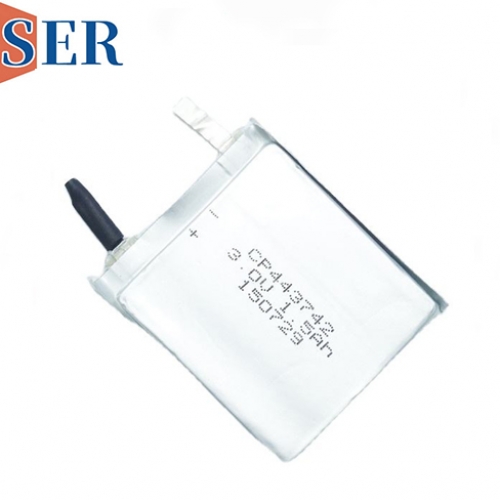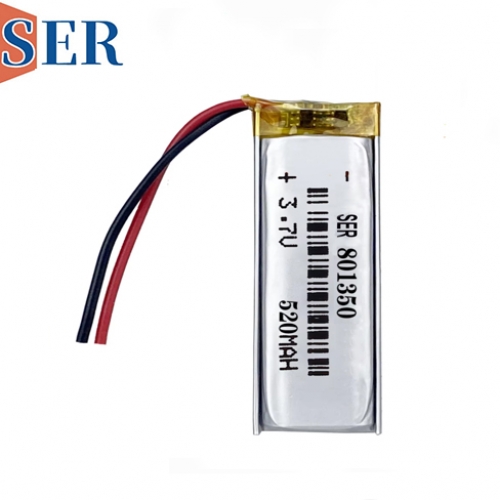Export Licensing Process for Lithium Thionyl Chloride (LiSOCl₂) Batteries Under China’s Chemical Weapons Convention (CWC) Regulations
Navigating the Export Licensing Process for Lithium Thionyl Chloride (LiSOCl₂) Batteries Under China’s Chemical Weapons Convention (CWC) Regulations
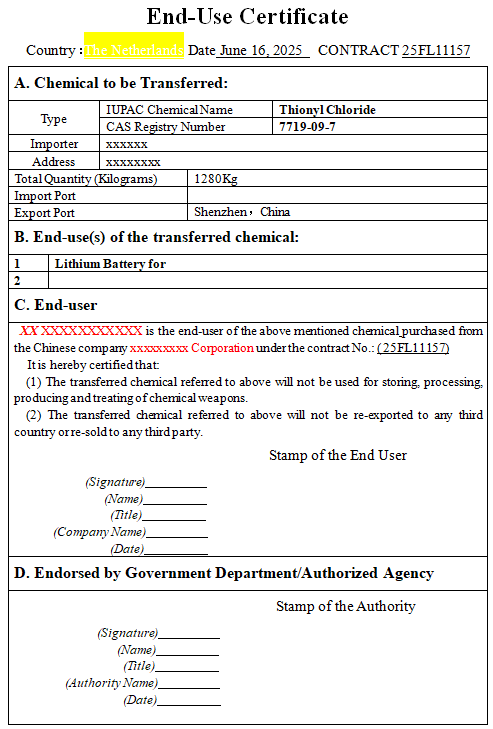
Abstract
The inclusion of lithium thionyl chloride (LiSOCl₂) in China’s Catalog of Monitored Chemicals has introduced stringent regulatory requirements for the export of LiSOCl₂ batteries, including standard and high-temperature battery variants. Exporters must now obtain a Dual-Use Export License for Monitored Chemicals, a process involving multiple government agencies and compliance with international non-proliferation obligations. This article outlines the regulatory framework, step-by-step licensing procedures, documentary requirements, and strategic considerations for stakeholders in the LiSOCl₂ battery supply chain. By analyzing China’s CWC commitments and practical challenges, it provides actionable insights for navigating this complex regulatory landscape.
1. Introduction
Lithium thionyl chloride (LiSOCl₂) batteries are prized for their high energy density, long shelf life, and operational stability across extreme temperatures, making them indispensable in critical applications such as military equipment, aerospace systems, and industrial IoT devices. However, the chemical constituents of LiSOCl₂ batteries—notably lithium metal and thionyl chloride (SOCl₂)—are classified as Schedule 3 chemicals under the Chemical Weapons Convention (CWC) due to their potential dual-use in chemical weaponry.
In 2024, China’s Ministry of Industry and Information Technology (MIIT) updated the Catalog of Monitored Chemicals to include LiSOCl₂, necessitating that exporters of LiSOCl₂ batteries (both standard and high-temperature variants) secure a Dual-Use Export License for Monitored Chemicals. This license is issued by the Ministry of Commerce (MOFCOM) but requires prior approval from MIIT’s Explosion-Proof Division, which verifies compliance with CWC safeguards.
This article demystifies the licensing process, offering a structured guide for manufacturers, exporters, and end-users to navigate China’s regulatory regime while balancing commercial interests with non-proliferation obligations.
2. Regulatory Framework
2.1 International Obligations: The Chemical Weapons Convention (CWC)
The CWC, which entered into force in 1997, prohibits the development, production, and stockpiling of chemical weapons while regulating dual-use chemicals that could be diverted for military purposes. Schedule 3 chemicals—including lithium metal (>1 gram per battery) and thionyl chloride (used in electrolyte formulations)—are subject to export controls to prevent proliferation.
China, as a CWC State Party, is obligated to:
Maintain a national control list aligned with CWC schedules.
Enforce "end-use verification" to ensure chemicals are not diverted for prohibited purposes.
Impose licensing requirements for exports of Schedule 3 chemicals and their derivatives.
2.2 China’s Domestic Legislation
Key regulations governing LiSOCl₂ battery exports include:
Regulation on the Administration of Monitored Chemicals (2011 Revision): Defines control lists, licensing procedures, and penalties for violations.
Measures for the Administration of Dual-Use Items and Technologies Export Control (2020): Specifies licensing requirements for CWC-listed chemicals.
MIIT Announcement No. XX of 202X: Formally includes LiSOCl₂ in the Catalog of Monitored Chemicals, triggering licensing obligations for battery exports.
3. Step-by-Step Licensing Process
The export of LiSOCl₂ batteries involves a two-stage licensing procedure:
3.1 Stage 1: MIIT Approval (Pre-License Verification)
Objective: Obtain MIIT’s confirmation that the export complies with CWC safeguards.
Steps:
End-Use Certificate (EUC) Submission:
The foreign end-user must issue an EUC, certifying that the batteries will not be re-exported or used for prohibited purposes (e.g., chemical weapons).
The EUC must be notarized by the end-user’s national authority (e.g., a CWC National Authority) and submitted in Chinese or English with an official translation.
Manufacturer’s Compliance Documentation:
Record of Chemical Import and Procurement: Details of raw material sourcing (e.g., lithium metal, thionyl chloride) and inventory management.
Quality Control Certificates: ISO 9001 or equivalent certifications demonstrating adherence to safety standards.
Material Safety Data Sheets (MSDS): For all battery components.
LiSOCl₂ battery producers must provide:
Exporter’s Application to MIIT:
Completed Application Form for Monitored Chemicals Export.
EUC from the end-user.
Manufacturer’s compliance documents.
Technical specifications of the batteries (e.g., lithium content, operating temperature range).
The exporter submits an application to MIIT’s Explosion-Proof Division, including:
MIIT Review and Approval:
Compliance with CWC end-use controls.
Consistency with China’s export control policies.
Risk of diversion to prohibited entities (e.g., via sanctions screening).
MIIT assesses the application for:
Approval is granted in the form of a MIIT Authorization Letter, valid for 6 months.
3.2 Stage 2: MOFCOM License Application
Objective: Secure the final Dual-Use Export License from MOFCOM.
Steps:
Application Submission:
MIIT Authorization Letter.
Commercial invoice and contract (indicating end-user details).
Freight documentation (e.g., bill of lading, airway bill).
Exporter’s Declaration of Compliance: Affirming adherence to CWC and Chinese regulations.
The exporter submits the following to MOFCOM’s Service Center for Export Control:
Inter-Agency Consultation:
MIIT (to cross-verify technical details).
The Ministry of Foreign Affairs (for geopolitical risk assessments).
Customs authorities (for export monitoring).
MOFCOM coordinates with:
License Issuance:
Quantity and value of batteries authorized for export.
Validity period (typically 1 year, renewable).
Conditions for re-export (if permitted).
Upon approval, MOFCOM issues the Dual-Use Export License, specifying:
4. Key Documentary Requirements
End-Use Certificate (EUC) | Verifies non-proliferation compliance by the end-user. |
MIIT Authorization Letter | Confirms pre-approval from the regulatory authority. |
Commercial Invoice/Contract | Establishes the commercial transaction and end-user identity. |
MSDS and Technical Specifications | Ensures safe handling and confirms compliance with CWC thresholds. |
Exporter’s Declaration | Affirms adherence to Chinese export control laws. |
5. Strategic Considerations for Stakeholders
5.1 For Exporters
Early Engagement: Initiate discussions with MIIT and MOFCOM 3–6 months prior to planned exports to address potential delays.
End-User Due Diligence: Screen end-users against sanctions lists (e.g., OFAC, EU) and request references from previous suppliers.
Record-Keeping: Maintain audit trails of all communications, documents, and approvals for at least 5 years.
5.2 For Manufacturers
Supply Chain Transparency: Document the origin of raw materials (e.g., lithium from CWC-compliant suppliers).
Batch Tracking: Implement systems to trace batteries from production to export.
Training: Educate staff on CWC obligations and red flags for diversion (e.g., unsolicited bulk orders).
5.3 For End-Users
Proactive Certification: Prepare EUCs well in advance and engage national authorities for notarization.
Compliance Assurance: Provide exporters with detailed usage plans to expedite approvals.
6. Challenges and Mitigation Strategies
6.1 Regulatory Ambiguity
Challenge: Interpreting CWC thresholds (e.g., "1 gram of lithium per battery") for complex battery designs.
Mitigation: Seek clarifications from MIIT or engage legal counsel with CWC expertise.
6.2 Processing Delays
Challenge: MIIT and MOFCOM reviews may take 2–3 months.
Mitigation: Submit applications during low-volume periods and prioritize critical shipments.
6.3 End-User Cooperation
Challenge: Foreign entities may resist providing EUCs due to bureaucratic hurdles.
Mitigation: Offer template EUCs and assist with notarization processes.
7. Future Outlook
As global non-proliferation pressures mount, China is likely to:
Expand Control Lists: Include additional battery chemistries (e.g., lithium-sulfur) under CWC regulations.
Enhance Enforcement: Deploy AI-driven tools to monitor exports and detect diversion patterns.
Strengthen International Cooperation: Align with the Australia Group’s best practices for dual-use controls.
Stakeholders should anticipate tighter regulations and invest in compliance infrastructure to mitigate risks.
8. Conclusion
The export of LiSOCl₂ batteries under China’s CWC regime demands meticulous planning, inter-agency coordination, and a commitment to non-proliferation. By adhering to the outlined licensing process, maintaining transparency, and fostering collaboration across the supply chain, stakeholders can navigate regulatory complexities while sustaining global market access. As the regulatory landscape evolves, proactive adaptation will be key to balancing commercial success with strategic compliance.

